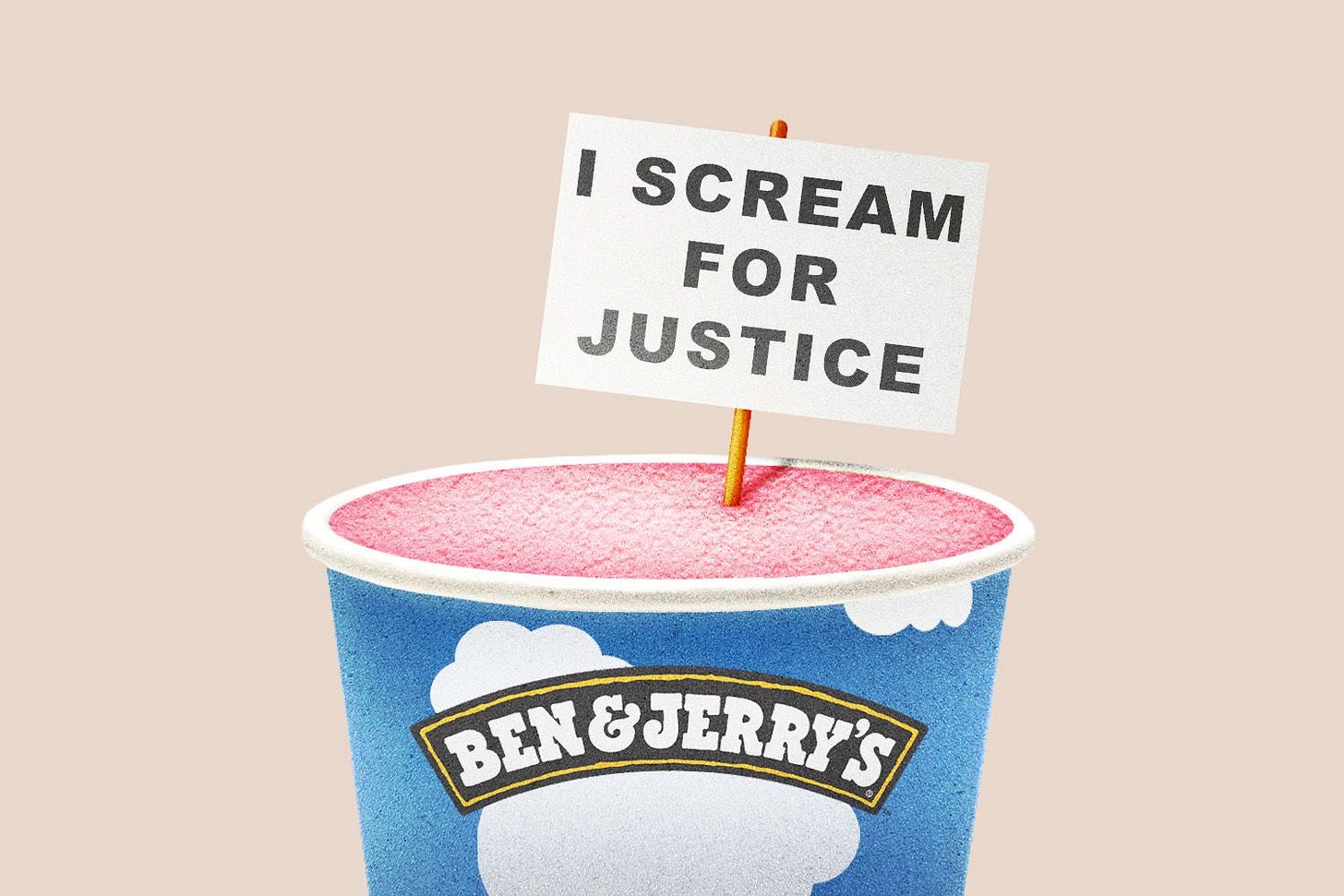'Everything is gentrification now'
I've been in the rooms where these decisions get made, and the justification usually sounds something like this…"We're not stealing, we're celebrating."
"Everything is gentrification now. Nothing stays just for the culture," is what a family friend said over dinner last week, and it got me thinking about how true or untrue this might be.
As someone who works in the marketing and branding world, I must admit, over lunch colleagues and I will discuss something we've seen, a new dance trend, an underground fashion movement, a viral community ritual and then start brainstorming how it could work for a campaign or brand launch.
It’s instinct! We joke that it’s in our blood but it does open the question: is anything sacred now, or is everything monetisable and to what end?
If you work in marketing, you've probably had this exact conversation. You've spotted something that feels real in a world of manufactured content and your first instinct was to figure out how to bottle it, brand it, and scale it.
But what if I told you that this instinct, this reflex to commodify culture, might be killing the very thing that makes these movements valuable in the first place?
Well, let’s explore.
But first, we need to get the definitions correct.
Modern Culture, for example, is the soft life movement starting with Black women prioritising rest, it's Gen Z creating entirely new vocabularies around mental health and identity. Modern culture is bottom-up, community-driven, and often born out of necessity, resistance, or pure creative expression.
Cultural Gentrification in branding terms is what happens when brands extract the aesthetic, language, or practices of a culture without understanding, respecting, or investing in the community that created it.
It's taking the style without the substance, the look without the meaning, the profit without the partnership.
This mirrors what's happening in physical spaces.
When luxury chains and premium coffee franchises start opening in Brixton, Hackney, or Peckham, they’re not just changing the retail sector, they’re basically changing the economic reality for the people that live there.
These aren’t small businesses trying to “make it” these are corporate expansions that bring with them higher rents, different customer bases, and price points that price out the communities that made these areas culturally significant in the first place.
The difference is that cultural gentrification happens faster and reaches further than physical gentrification ever could because of social media.
Scholar S. Sharma studied and wrote how Black cultural production online is frequently co-opted and mainstreamed without context or credit, basically pushing Black creators out of spaces they helped build. Artist and curator Kimberly Drew has also emphasised how Black creativity is often commodified by mainstream institutions without providing economic support or ownership to its originators.
Remember when TikTok started blowing up and Black creators literally had to beg for credit when their dances went viral? In 2020, Jalaiah Harmon, a 14-year-old Black girl, created the viral "Renegade" dance. But it wasn’t until The New York Times reported on it that she was finally credited, long after white influencers like Charli D’Amelio had gained millions of followers and brand deals performing her choreography.
Similarly, drag terminology like "slay," "serving," "tea," and "shade" being adopted by mainstream brands without crediting drag culture.
Corporate marketing has adopted terms like 'throwing shade' and 'reading,' which originate from 1980s ballroom culture, a subculture created by Black and Latino LGBTQ+ communities in cities like New York.
As documented in Jennie Livingston’s 1990 documentary Paris Is Burning and explored in academic work by scholars such as bell hooks and José Esteban Muñoz, these verbal practices were more than playful insults.
“They were sophisticated forms of performance and social critique, functioning as tools of survival, identity assertion, and resistance in the face of racism, homophobia, and marginalisation.”
Now marketing agencies use 'shade' in Twitter campaigns for fast food brands, completely separate from the context of resistance and resilience that gave these terms their power.
“White influencers earn 50% more per post than Black influencers, even when building on Black cultural work.” – SevenSix Report
Why am I mainly talking about minorities when it comes to cultural gentrification?
Well, because marginalised communities, especially Black, Indigenous, and other people of colour, have historically been the primary creators of cultural movements that later get commodified, sanitised, and profited from by the mainstream.
These communities often build cultural spaces as a form of resistance, expression, and survival. But once those expressions gain visibility, they’re usually repackaged by more privileged groups.
Cultural gentrification isn’t just about imitation, it’s about power. That’s why we have to centre minorities in this conversation because they’re the ones consistently creating culture, and just as consistently being pushed out of it when it becomes “profitable.”
The role of marketers
Let's be honest about how this works in practice. I've been in the rooms where these decisions get made, and the justification usually sounds something like this:
"We're not stealing, we're celebrating."
"We're giving them exposure."
"This will bring their culture to a wider audience."
"They should be grateful for the platform."
Major wellness brands have turned ancient spiritual practices into £47 billion industry while the communities that preserved these traditions for centuries see almost none of the profit. Yoga, meditation, sage burning, crystal healing, all extracted from their cultural contexts, stripped of their spiritual significance, and repackaged as lifestyle products.
Some brands have shown done things the right way. Take Nike, for example, they have invested in the culture from funding community courts and grassroots leagues to supporting athlete activism and championing social justice causes, Nike has spent over four decades building real credibility within the basketball world. Their long, term investment, not just in products, but in people and principles has helped them dominate a multibillion-dollar market with integrity and influence.
Ben & Jerry’s offers another model.
Unlike brands that adopt progressive messaging for clout, Ben & Jerry’s consistently backs up its values with real action even when it risks public or financial backlash.
From supporting criminal justice reform to speaking out on Indigenous rights, they’ve built trust by proving their activism is more than a campaign, it’s a core business practice.
So how do you navigate this?
How do you engage with culture without destroying it? Here's the framework I use:
Ask first:
Who created this culture and why?
What does this community need to thrive?
How can we support rather than extract?
Invest, don't extract:
Are we providing resources, opportunities, or just exposure?
Will our involvement make it easier or harder for this community to maintain their culture?
Who benefits if this campaign succeeds?
Measure beyond profit:
What's our impact on the community's economic health?
Are we preserving or diluting the culture's meaning?
Can the community still afford to participate in their own culture after our involvement?
My family friend was wrong, but also right. Everything doesn't have to be gentrification, but everything is becoming monetisable because we've built systems that make extraction easier than collaboration.
The good news is the communities that create culture are fighting back, building alternatives, and demanding better partnerships. The brands that recognise this shift early won't just avoid backlash, they'll build stronger, more sustainable relationships with the communities that drive cultural innovation.
Until next time, keep listening, keep learning, and keep evolving.
And make sure you digress often. Curiosity is key to winning in this game.
Charlotte








this is so interesting- also seeing this becoming more common in my context with the rise of ‘scandanavian scarf’ and ibiza blouses - or Gucci’s take on an ‘indian saree’ for Alia Bhatt at Cannes
Thank you for talking about this because me and my close circle are ALWAYS venting about the co-opting of radical language into corporations and non-black people and it’s all so exhausting.